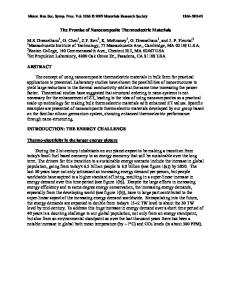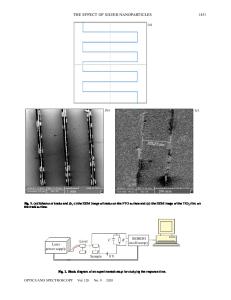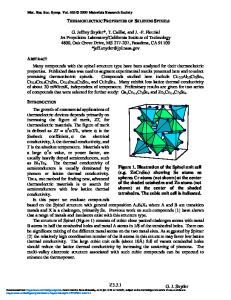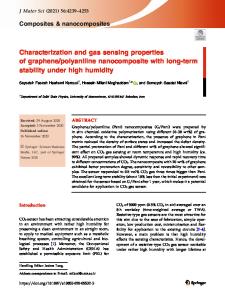Thermoelectric properties of PbTe-based graphene nanocomposite
- PDF / 1,968,276 Bytes
- 9 Pages / 595.276 x 790.866 pts Page_size
- 51 Downloads / 378 Views
Thermoelectric properties of PbTe-based graphene nanocomposite Kaleem Ahmad1,2,*
, Zeyad Almutairi1,2,3
, and Chunlei Wan4
1
Sustainable Energy Technologies Center, College of Engineering, King Saud University, Riyadh, Saudi Arabia K.A.CARE Energy Research and Innovation Center at Riyadh, Riyadh, Saudi Arabia 3 Mechanical Engineering Department, College of Engineering, King Saud University, P.O. Box 800, 11421 Riyadh, Riyadh, Saudi Arabia 4 State Key Laboratory of New Ceramics and Fine Processing, School of Materials Science and Engineering, Tsinghua University, 100084 Beijing, China 2
Received: 12 June 2020
ABSTRACT
Accepted: 4 October 2020
PbTe is a classic thermoelectric being used commercially in interplanetary and deep space missions due its high reliability and availability for power generation, however, the low efficiency limits its broader applications. The advancement in nanostructured powder processing with low-dimensional constituents has evolved as an effective strategy for the development of high-performance materials. In this work, coarse PbTe was transformed into nanostructured material through ball milling in an inert environment. Subsequently, 1 vol% graphene was uniformly dispersed in PbTe fine powder in order to translate the favorable properties of 2D sheets to the bulk matrix. The coarse PbTe and nanostructured PbTe/graphene composite powders were consolidated by the high-frequency induction heated sintering. The temperature-dependent thermoelectric properties of the bulk samples were evaluated. The electronic transport of pure PbTe demonstrated semi-metallic conducting behavior and the composite with 1 vol% of graphene indicated somehow semiconducting trend. The Seebeck coefficient changed from positive for PbTe to negative for PbTe/graphene composite thus exhibiting transformation of majority carriers. The power factor of the composite dominated by the electrical conductivity increased at higher temperature * 490K from pristine PbTe. The thermal conductivity of the composite decreased substantially over the entire temperature range suggesting multiscale phonon scattering. Consequently, reduction in thermal conductivity synchronized with increase in power factor leads to enhancement of thermoelectric figure of merit of the composite above * 490K from pristine PbTe.
Ó
Springer Science+Business
Media, LLC, part of Springer Nature 2020
Address correspondence to E-mail: [email protected]
https://doi.org/10.1007/s10854-020-04613-y
J Mater Sci: Mater Electron
1
Introduction
Thermoelectric energy harvesting technology has recently gained renewed interest due to advancements in the development of high-performance nanostructured materials as the utility of traditional renewable energy sources such as wind, solar, and geothermal are subject to location and local weather conditions [1]. Based on their dual applications for power generation and reversible heating this technology offers the most promising solutions for the challenges of energy crisis, energy efficiency, and reduction in CO
Data Loading...











